For nearly 90 years the name Hudson has stood for the best in railroading. In 1927 the New York Central began placing the first 4-6-4 locomotives at the head of its finest trains and named the new machines Hudsons. From that time forward the word began to represent more than a great river. A decade later Lionel chose the New York Central Hudson as the subject of its largest, most detailed and most expensive O scale model. With production ended after only five years and never resumed in full detain the Lionel Scale Hudson reigned as the monarch of the three rail O gauge world for half a century and rivaled the real locomotives as an icon of excellence.
Just as the Lionel Hudson models were reaching store shelves a new wave of 4-6-4 locomotives began to enter service on the New York Central, the Santa Fe, Milwaukee Road, Chicago & Northwestern, New Haven and Canadian Pacific. The trains they pulled were superb. They were all Pullman overnight trains, the fastest daytime trains in the world and a train fit for a King and Queen. The trains pulled by Hudsons were, as the Santa Fe stated it - Extra Fine, Extra Fast, Extra Fare.
In our ongoing exploration of modern O scale models let's take a look at the origins of the real New York Central locomotives and the locomotives that followed. Their performance on the famous trains of the 1930s are responsible for the lasting interest in Hudson locomotives and the wide range of Hudson models available to us today.
Early Hudsons 1927-1931 - the New York Central System leads and others soon follow.
The New York Central linked New York, Boston, Buffalo, Cleveland, Pittsburgh, Detroit, Chicago and St. Louis. Consider the business today between those cities handled by the passenger airlines, FedEx and UPS and you can begin to imagine the volume of passengers, mail and express parcels on the platforms of New York Central stations.
The Central linked the east with the midwest via its famous water level route along the Hudson and Mohawk rivers and the shores of the great lakes. By avoiding a mountainous crossing the New York Central could handle passenger trains without resorting to double heading or eight coupled passenger locomotives. In the mid 1920s the NYC had a vast fleet of 4-6-2 Pacific type locomotives to head its passenger trains. While the Pacifics did good work there was a desire for improvements in power and speed. By retaining the 79” drive wheels of their latest Pacifics and supporting an enlarged fire box with a four wheel trailing truck the New York Central created the first 4-6-4 and christened it the Hudson Type. A single locomotive, NYC 5200, was built as the sole member of NYC Class J1a. Two Hundred and twenty-four Class J1b, J1c, J1d and J1e locomotives for the Central and its subsidiaries followed by 1931. All shared critical dimensions with 25” x 28” cylinders, 225 PSI boilers and were booster equipped.
Lionel introduced their landmark scale model of J1e 5344 in 1937. Lionel's 700E was cataloged until 1942 when toy production was curtailed for the war effort. While a less detailed 773 Hudson appeared in 1950 and again in the 1960s a fully detailed scale Hudson was not offered again by Lionel until 1990. Designated the 1-700E it was big news and helped spur the growing interest in scale 3 rail models that has remained strong for the last 25 years.
Lionel offered a number of scale Hudson models in the 1990s. Most were typical of the time with diecast bodies and frames, three pole open frame motors and early sound systems. The Smithsonian Dreyfuss Hudson is one of the few brass models offered by Lionel. The 1990s era Lionel scale Hudsons include:
NYC 5340 6-18005 1990 1-700E
NYC 5450 6-18027 Smithsonian Brass Dreyfuss
C&O 490 6-18043 “Yellow Belly”
NYC 5344 6-18045 1996 Commodore Vanderbilt
NYC 5344 6-18056 Scullin Disc Drivers,Vanderbilt Tender
NYC 5344 6-18067 1999 Commodore Vanderbilt
PT tenders were added to some Hudsons starting in 1943. With the 14 wheel tenders the Hudsons could not only take water on the fly but also cover the run from Harmon, NY to Chicago with only one stop for coal. A separate sale PT tender was made available by Lionel in 2000 as part of the Century Club II offerings.
6-38097 NYC PT Tender
K-Line produced a scale Hudson model that remains well regarded for its high level of detail. Like some other K-Line products it has a smaller can motor than other similar modern era scale steam locomotives, a factor that should be considered if continuous hauling of a long passenger trains is desired. Two road numbers were produced and are part of the product number. Control features are indicated by a W, S or CC suffix indicating conventional, TMCC and TMCC with cruise control.
K3270-5343

K3270-5344

Lionel has offered two Vision Line J1e models with the Legacy command system.
NYC 5344 6-11209 Black 2010 Volume I

NYC 5331 6-11218 non-prototypical Grey 2010 Volume I
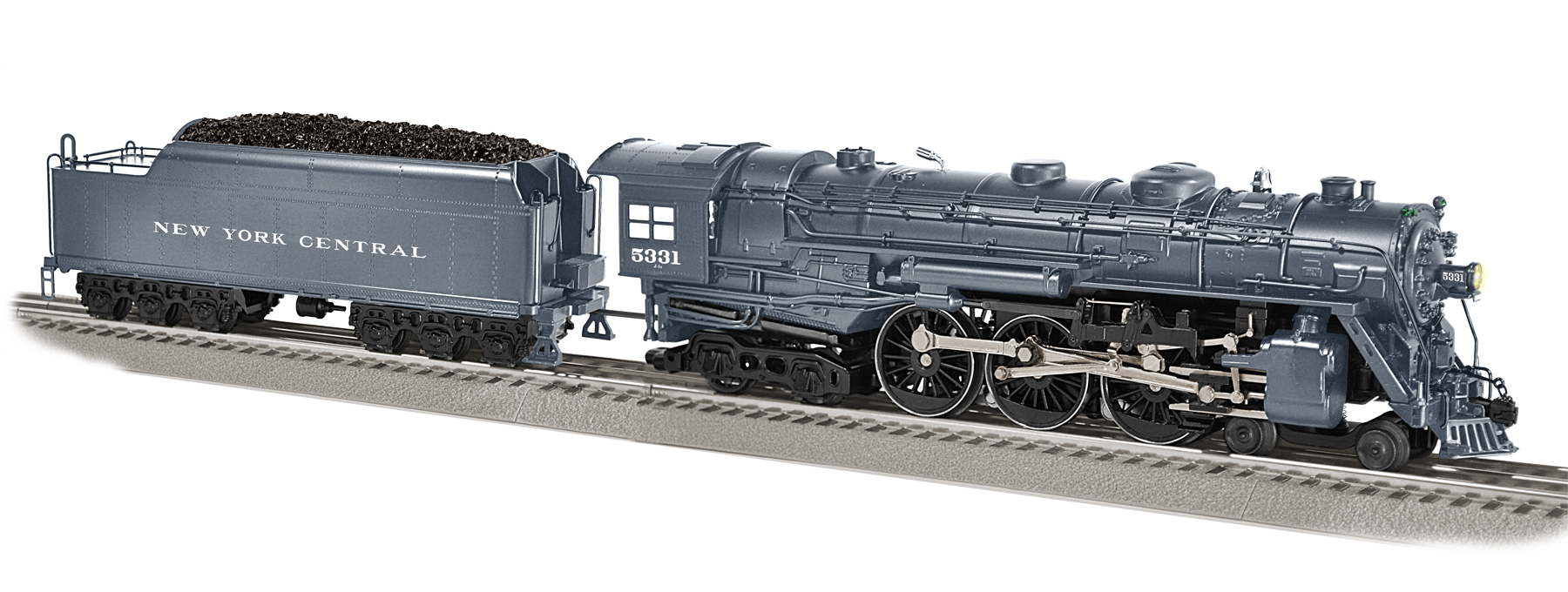
MTH has offered numerous models of the J1e.
NYC 5344 20-3020-1 Fall/Winter 1996
NYC 5343 20-3158-1,-2 2006 Volume I
NYC 5324 20-3321-1,-2 2008 Volume I

CCC&StL 6621 20-3582-1, 22-3582-2 2015 Volume I

J1e sets
NYC 5320 20-1004-1 freight set with O-72 ScaleTrax oval uncataloged
NYC 5344 20-1005-1 707W freight set 2005 Volume II - 125 sets made

CCC&StL 20-3324-1 passenger set 2008 Volume I
![]()
NYC 5316 20-3584-1 passenger set 2015 Volume I

MTH J-1e models with PT tenders
NYC 5274 20-3059-1 2001 Volume III

NYC 5344 20-3323-1,-2 2008 Volume I Scullin Disc Drivers
NYC 5334 20-3581-1, 22-3581-2 2015 Volume I Scullin Disc Drivers

NYC 5330 20-3585-1 Pacemaker Piggy Back Set 2015 Volume I

MTH has also offered their J1e model numbered and lettered for three of the twenty Boston & Albany J2 Hudsons.
B&A 616 20-3157-1,-2 2006 Volume I Black

B&A 613 20-3322-1,-2 2008 Volume I Green
B&A 606 20-3583-1,-2 2015 Volume I Green

Sunset has offered early NYC Hudsons that are alternatives to the ubiquitous J1e. J1a 5200 and J1d 5300 are set apart by their distinctive Elesco feedwater heaters.

The railroads running west from Chicago certainly noticed the New York Central Hudsons arriving from the east. While none adopted the Hudson as their standard passenger locomotive type the CB&Q, Milwaukee Road and the Santa Fe tested the Hudson waters between 1927 and 1930 with 4-6-4s of similar dimensions to the J1s and J2s of the New York Central System.
Santa Fe's first Hudsons were built by Baldwin in 1927. When built they had 74” drivers 25” x 28” cylinders and 220 psi boiler pressure. The Santa Fe rebuilt them with 79” drivers and increased boiler pressure to 230 psi. The 3450 herself is preserved at Pomona. Pecos River modeled the ATSF 3450 class in two and three rail in three versions: ATSF 3450 original, ATSF 3451 modern and ATSF 3458 final rebuild in 2 or 3 rail.

The CB&Q S-4 class Hudsons had 78” drivers, 25x28 cylinders and 250 psi boilers. Baldwin built them in 1930 and they have been modeled in O scale by Sunset/3rd Rail.

The Milwaukee Road F-6 class was built by Baldwin in 1930. Called Baltics by the Milwaukee, they had 80” drivers, 26” x 28” cylinders and 225 psi boilers. Weaver has offered brass models in two and three rail O scale. Eric's Trains has an excellent video review.
The Nickel Plate ordered eight light Hudsons in 1927, four each from Alco and Lima. They 25"x26" cylinders, 215 psi boilers and 73" drivers. Weaver has offered brass models of the NKP Hudsons.

The Canadian Pacific joined the ranks of Hudson owning railroads in 1929 with the purchase of 20 locomotives from the Montreal Locomotive Works. The CP's H-1a and H-1b Hudsons were powerful with 275 psi boilers, 22x30 cylinders and 75” drivers. They had a neat, conventional appearance with Elesco feedwater heaters. Weaver has offered models of the early CP Hudsons in brass construction.
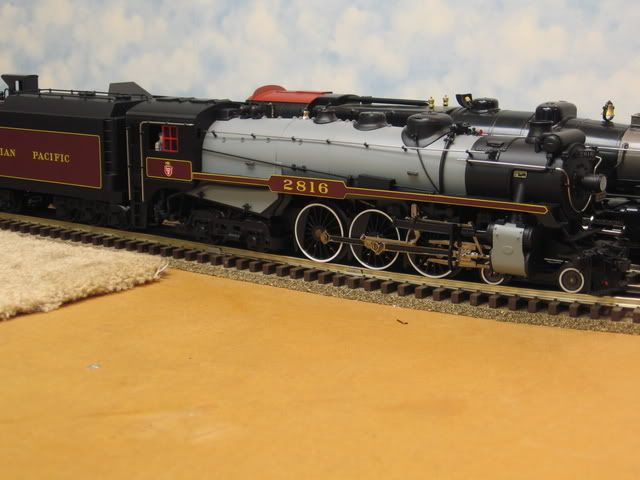
The Second wave of Hudsons – More Power, More Speed for the Northeast, Midwest and Canada
By the late 1930s intercity rail passenger service was facing heavy competition from better automobiles and the first modern airliners. The response of several railroads was spectacular. New trains with elegantly appointed streamlined cars and some of the fastest times ever scheduled in this hemisphere were sure signs that America's railroads were keeping up with the ever faster pace of modern times. And several of those modern trains were pulled by even more powerful streamlined Hudsons. Their performance was so spectacular that today's electrified Amtrak trains barely top their long distance speeds.
The New York Central's J3a
The New York Central designed a new class of Hudson for a new era of faster passenger trains. Designated the J3a and numbered 5405-5454 they were built by Alco in 1937 and 1938. While they retained the same 79' drivers of the J1 Husons their 22.5” x 29” cylinders and 265 PSI boilers along with disc or boxpok drivers gave them finer balance for even higher speeds.
Lionel has offered a J3a model as a separate sale item and in a set.
NYC 5444 6-28072 2001 Volume I

NYC 5433 6-31705 passenger set 2002 Volume I

Williams offered a brass J3a model in the early 1990s.

Sunset offered a J3a rebuilt with a Selkirk front end, Worthington FWH and PT tender.
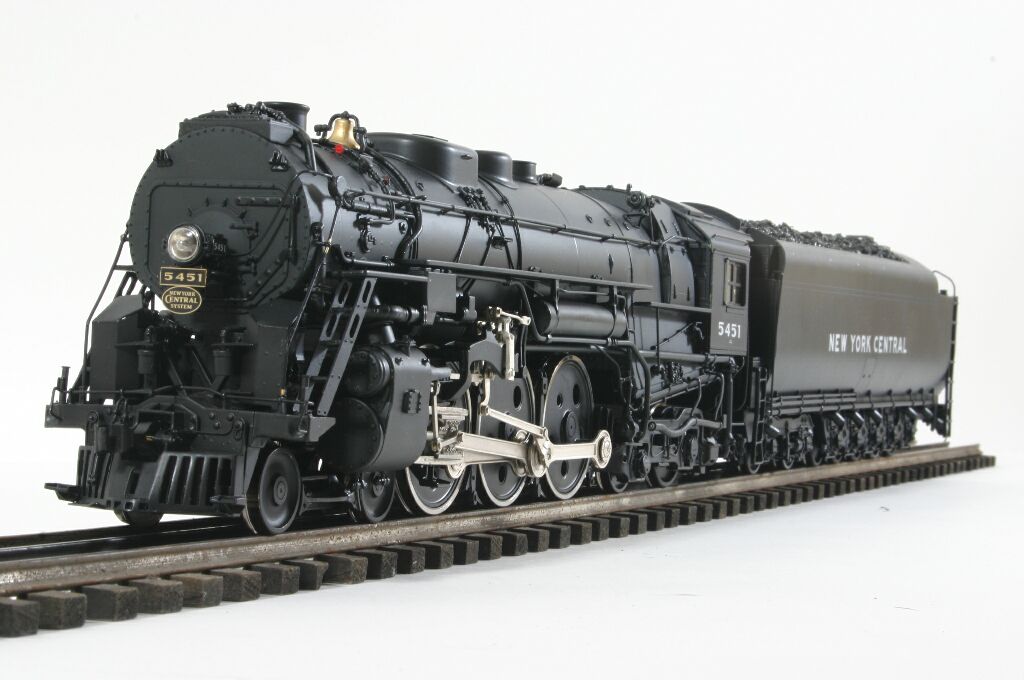
The last ten J3a Hudsons, numbered 5445 to 5454, received streamlining designed by Henry Dreyfuss for service on the 20th Century Limited. In fact, Dreyfuss styled the entire train, from Locomotive to boat tailed observation car, from exterior paint scheme to interior design. Not only was it an elegant way to travel it was fast. The Century averaged a mile a minute for 16 hours from New York to Chicago. The Century offered travelers an end of the business day departure from Manhattan, a scrumptious dinner, evening relaxation in the lounge car and a comfortable night sleep before a morning arrival at LaSalle Street Station. The 1938 edition of the all Pullaman 20th Century Limited will forever rank among the best of the best of American passenger trains.

Lionel's 2002 Volume II catalog contains Dreyfuss Hudson NYC 5452 6-28084

MTH offers a wide array of Dreyfuss Hudson models in the original 1938 20th Century Limited Paint scheme and the simplified in 1940 version. Modelers also get a choice of Scullin Disc or Boxpok drive wheels, 2 or 3 rail configurations and 12 wheel or 14 wheel PT tenders.
NYC 5445 20-3045-1 2000 Volume II Boxpok Drivers 1938
NYC 5447 20-3217-1,-2 2006 Volume I Boxpok Drivers 1938
NYC 5448 20-3523-1, 22-3523-2 2014 Volume I Boxpok Drivers 1938

NYC 5452 20-3216-1,-2 2006 Volume I Scullin Disc Drivers 1938
NYC 5451 20-3524-1, 22-3524-2 2014 Volume I Scullin Disc Drivers 1938

NYC 5449 20-3522-1, 22-3522-2 2014 Volume I Boxpok Drivers 1940

NYC 5454 20-3521-1, 22-3521-2 2014 Volume I Scullin Disc Drivers 1940
NYC 5453 22-3526-2 Scullin Disc Drivers 1940

J3a Dreyfuss Hudson with PT tender
NYC 5453 20-3214-1,-2 2006 Volume I Scullin Disc Drivers

NYC 5446 20-3215-1,-2 2006 Volume I Boxpok Drivers
NYC 5445 20-3527-1, 22-3527-2 2014 Volume I Boxpok Drivers

MTH J3a Dreyfuss Hudson sets
NYC 5450 20-3525-1 1938 20th Century Limited Set 2014 Volume I 1938
![]()
NYC 5453 20-3526-1 1940 20th Century Limited Set 2014 Volume I 1940
![]()
Sunset 3rd Rail has also offered NYC Dreyfuss Hudson models
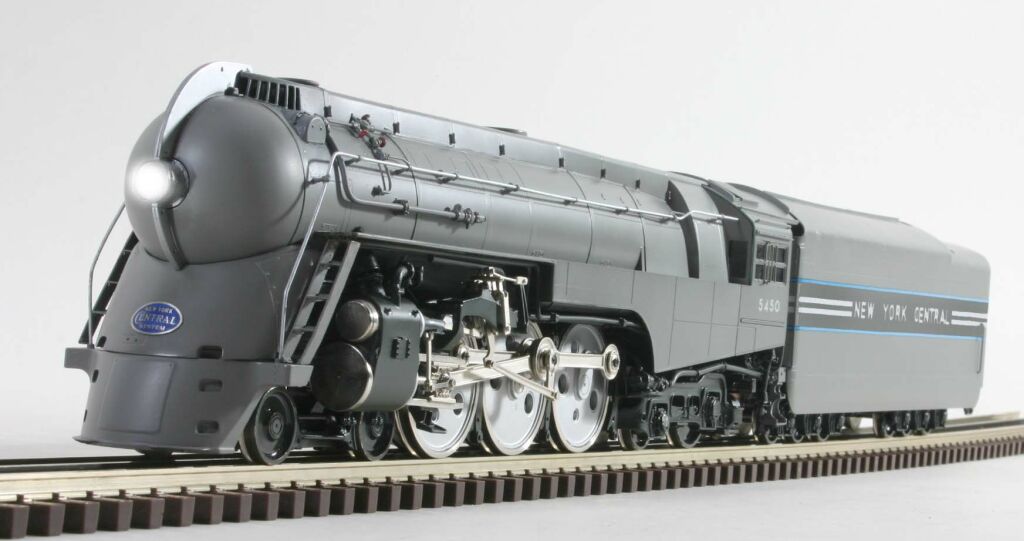
In 1941 the New York Central updated the Empire State Express with new Budd stainless steel passenger cars. Two J3a locomotive were streamlined especially for the train in style that blended the Century's lines with the stainless cars.
MTH has offered Empire State Express J3a Hudsons twice
NYC 5426, 5429 20-3016-1, -2 Winter 1995
NYC 5426, 5429 20-3105-1 2003 Volume I

Lionel offered a model of the Empire State Express Hudson as part of the Century Club II series. It appears again in the 2015 Signature catalog with new versions featuring the PT tenders, partially removed skirting and even mismatched drivers seen in later years.
NYC 5429 6-38000
NYC 5429 6-82534
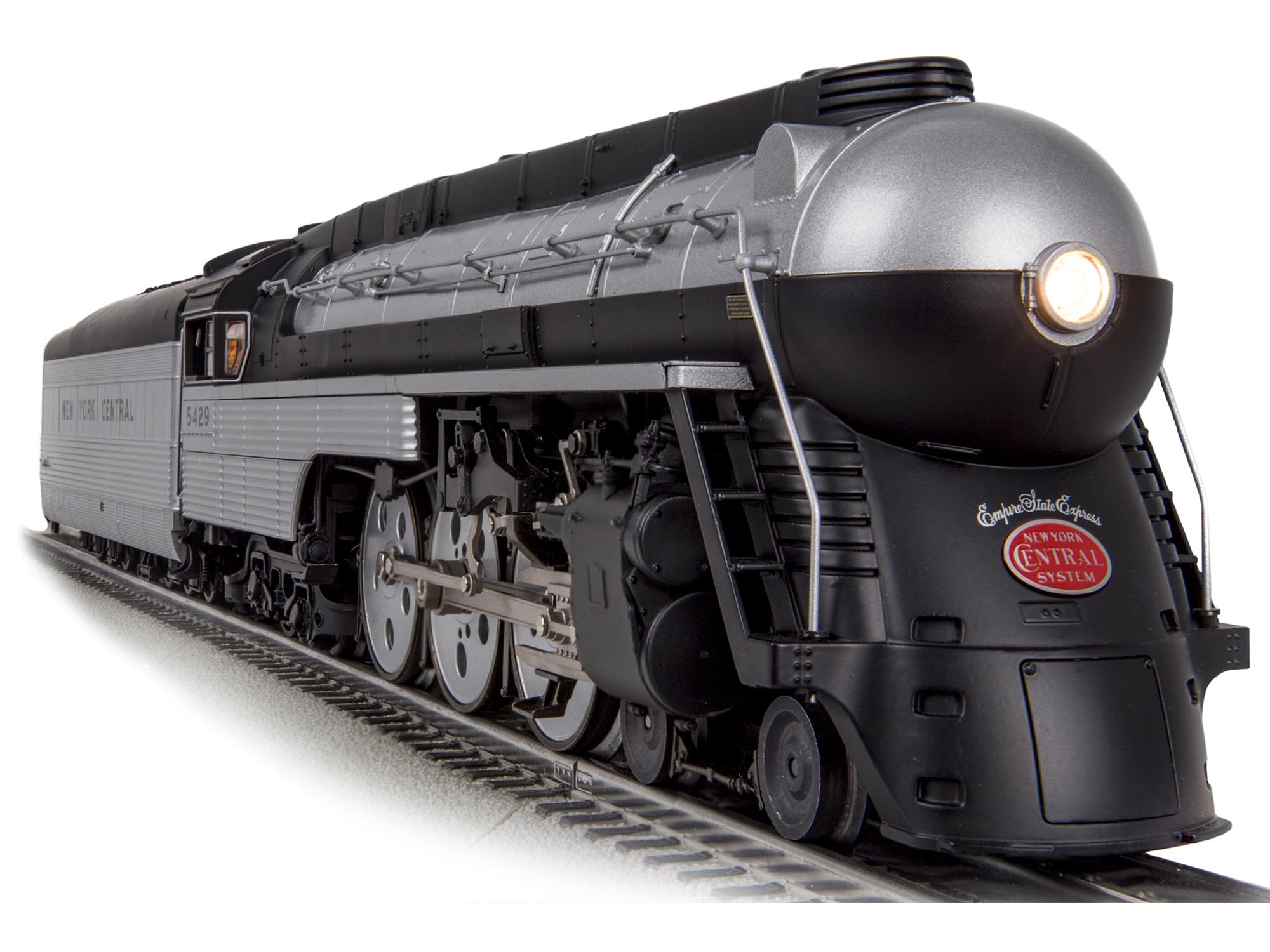
NYC 5426 6-82535
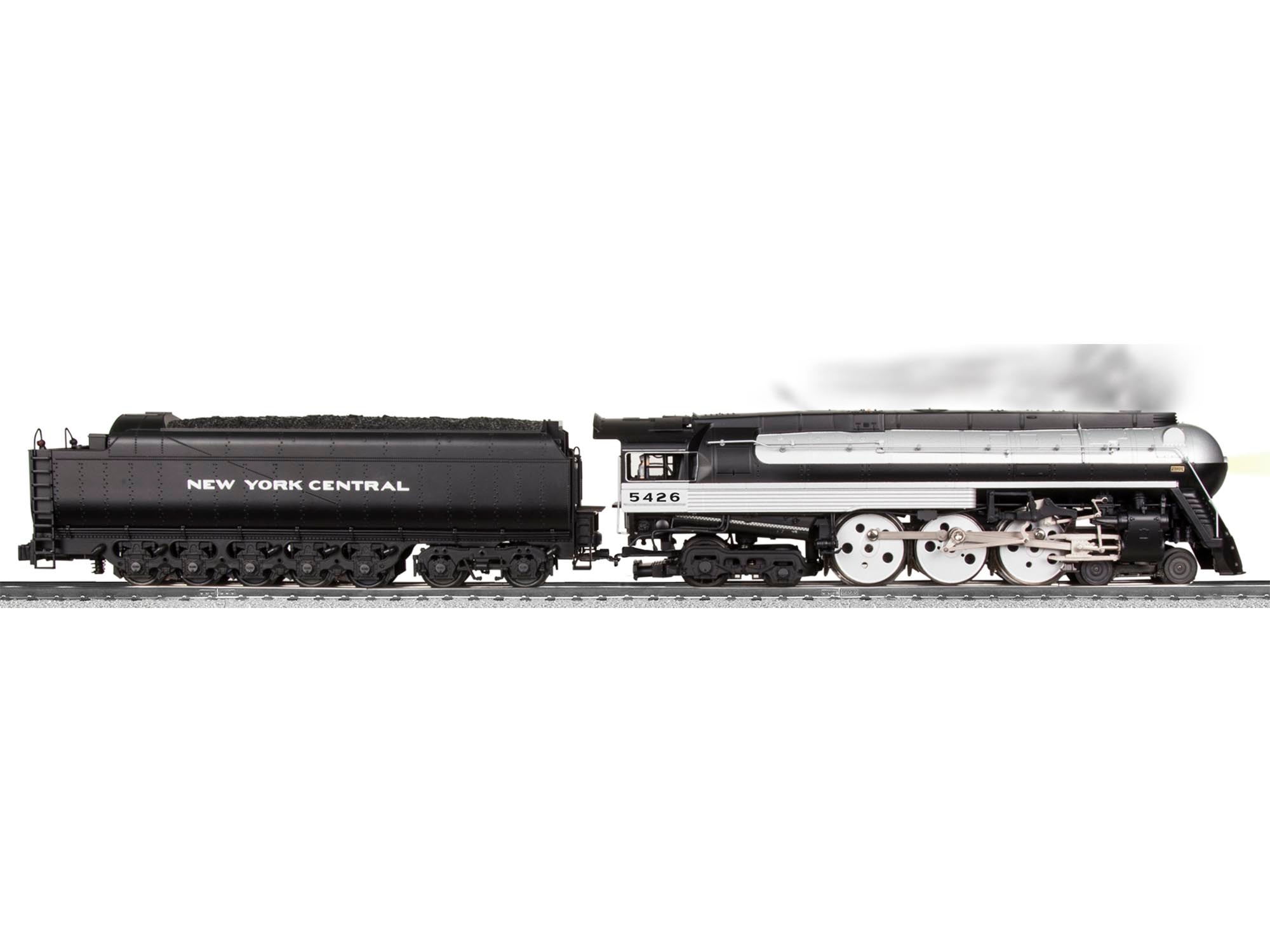
NYC 5429 6-82536
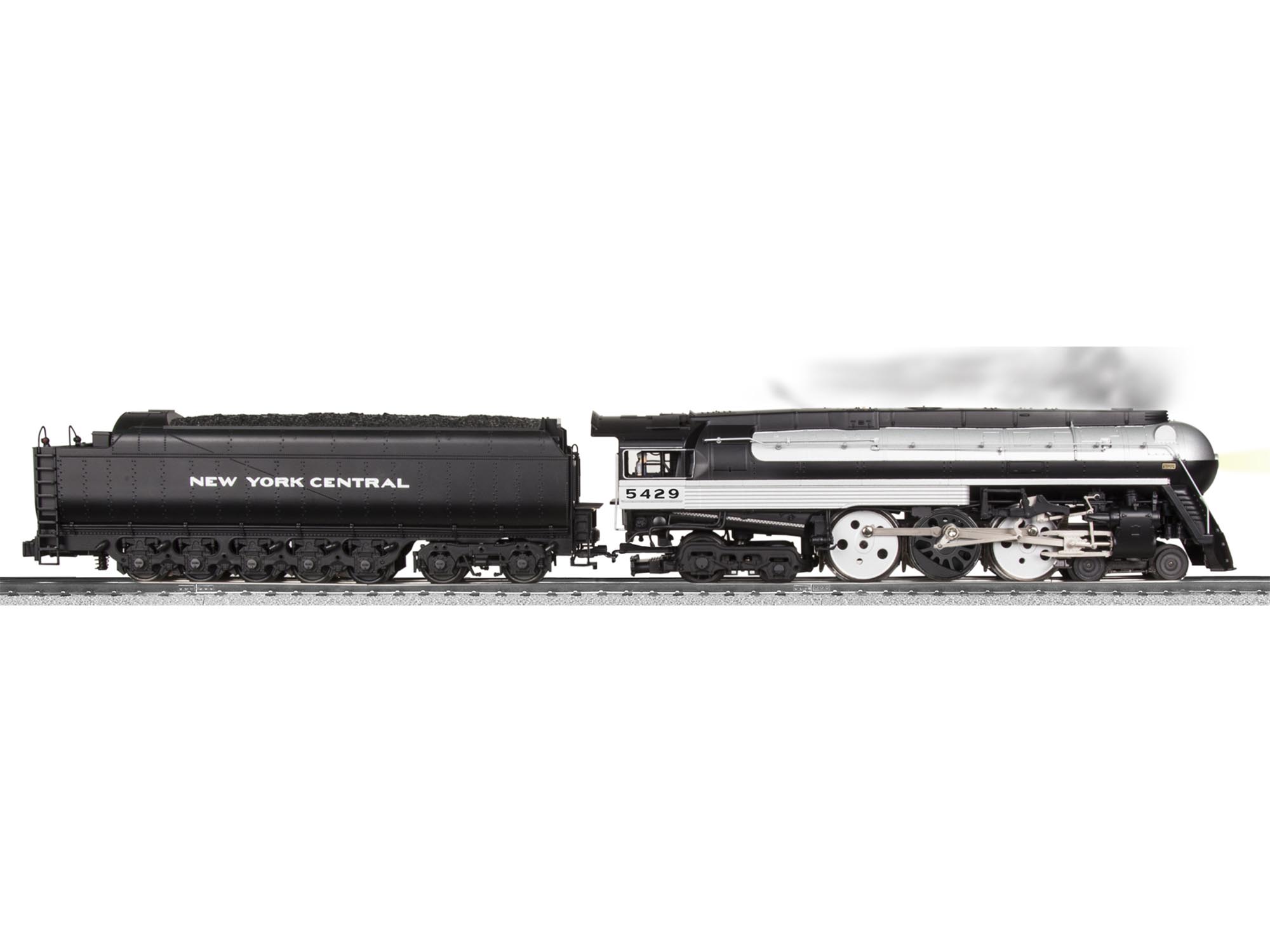
NYC 5426 6-82537
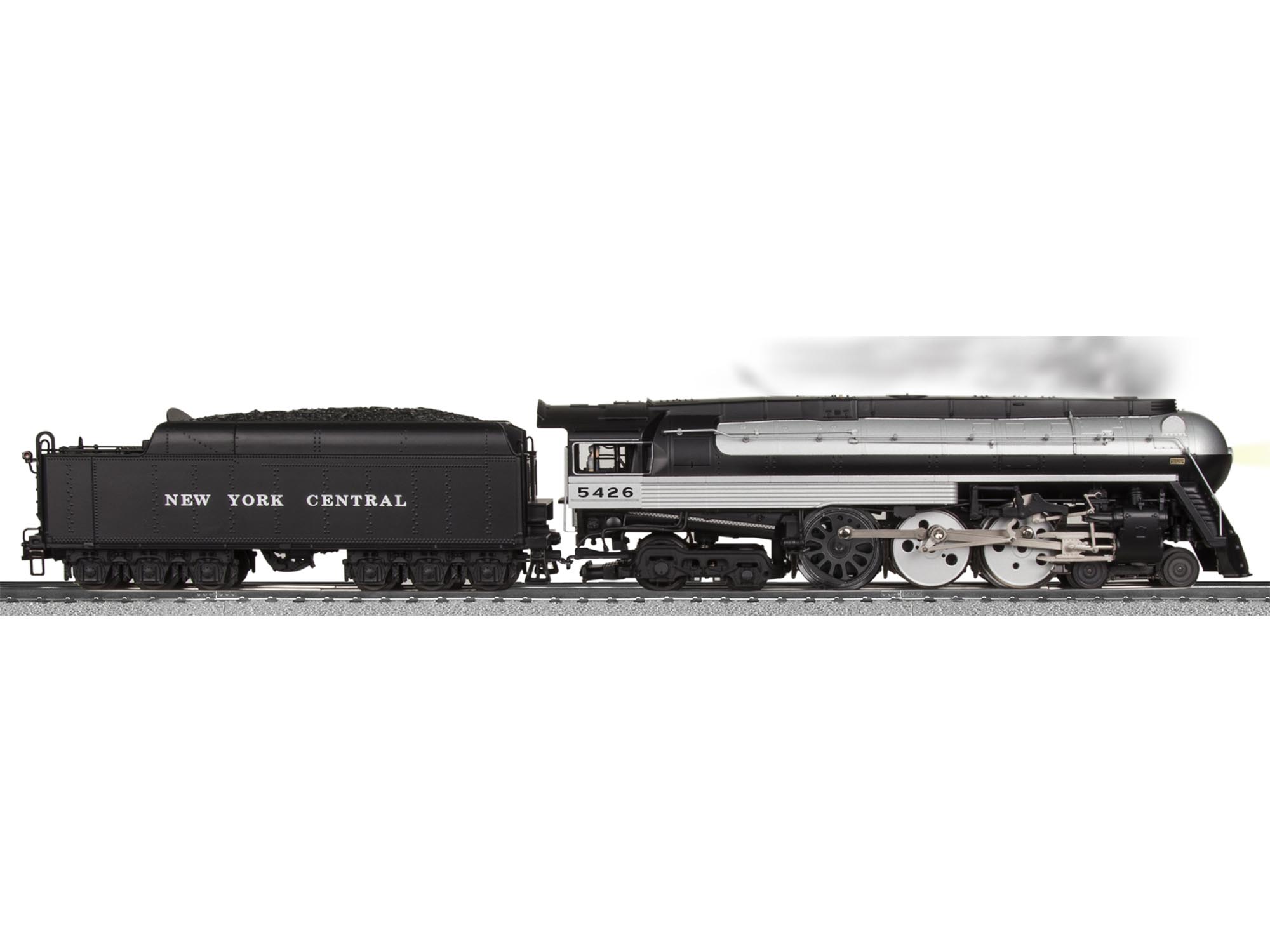
NYC 5426 6-82528 set

Sunset/3rd Rail has also modeled the Empire State Express J3a Hudsons.
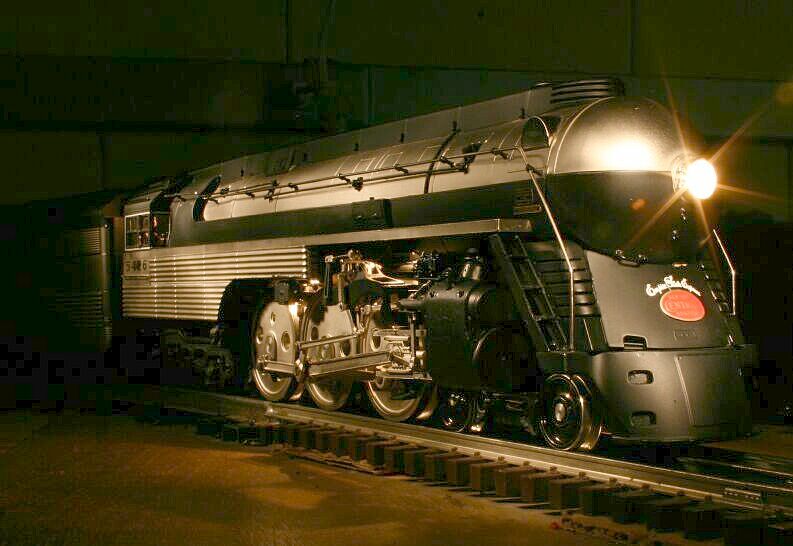
Thoroughbred Race Horses for the Chief, the 400 and the Hiawatha
In the late 1930s the Chicago & Norhwestern, the Milwuakee Road, and the Santa Fe all engaged in a second round of Hudson construction for the fastest passenger services in the world at that time. These Hudsons all exceeded the NYC J3a in driver diameter and boiler pressure. There were capable of high speed, high endurance and high reliability.
The Santa Fe 3460 class featured 84” drivers, 23.5x29 cylinders and 300 PSI boilers. Baldwin built them in 1937. The 3460s were frequently assigned to the Chief, one of the worlds fastest long distance trains.
MTH has modeled the unstreamlined members of the class.
ATSF 3463 20-3135-1,-2 2004 Volume II
ATSF 3464 20-3144-1,-2 Uncataloged
ATSF 3461 20-3475-1,-2 2011 Volume II
ATSF 3462 20-3476-1,-2 2011 Volume II

An uncataloged weathered version of ATSF 3461 has also been offered as the 20-81003-1. The weathering helpes to highlight the level of detail.


ATSF 3465 20-3474-1 set 2011 Volume II
![]()
MTH has also modeled the streamlined Blue Goose, leader of the ATSF 3460 class.
ATSF 3460 20-3099-1 2002 Volume I
ATSF 3460 20-3194-1,-2 2005 Volume II
ATSF 3460 20-3435-1,-2 2011 Volume I

The ATSF 3460 20-3436-1 set from 2011 Volume II has unprototypically decorated cars but looks great.

The Chicago & Northwestern helped to kick off the era of truly fast passenger service with its 400. The marketing behind the 400 was simple. It covered the 400 miles between Chicago and St. Paul in 400 minutes. In the mid 1930s the Northwestern was in a fierce battle for the Chicago to twin cities passenger market with the Milwaukee Road and the Chicago, Burlington and Quincy. The Milwaukee began their Hiawatha service with specially built 4-4-2 Atlantics while the Q's Twin Zephyrs were pulled by custom diesels. The C&NW used more conventional equipment and updated the 400 with E-4 class streamlined Hudsons in 1938. Built by Alco they had 84” drivers, 25” x 29” cylinders and 300 psi boilers. When Electro-Motive E unit diesels took over the 400s the E-4s continued in fast passenger work between Chicago and Omaha.
MTH first cataloged the C&NW E-4 in 1999. It has since appeared with ProtoSound 2 for separate sale and in a set.
4008 20-3034-1, -2 1999 Volume III,
4003 20-3298-1 2007 Volume II

20-3325-1 set 2008 Volume I

The Milwaukee Road F-7 was designed specifically for expanding their popular Chicago to Twin Cities Hiawatha streamliner. The F-7s 300 psi boilers, 23 ½ x 30 inch cylinders and 84 inch drive wheels gave them the ability to run at 100 miles per hour while turning only 400 RPM. They hit the century mark daily between Chicago and Milwaukee. Nearly 80 years later the Boston to Washington Acela has an average speed little above that of the 1939 Chicago to St. Paul F-7 Hudson powered Hiawatha.
MTH has cataloged the Milwaukee Road F7 Hudson twice.
MILW 101 20-3096-1 2002 Volume II
MILW 104 20-3437-1 2011 Volume I

MILW 102 20-3438-1 set 2011 Volume I

Weaver has also produced a Milwaukee Road F7 in brass.
The Royal Hudsons
After the success of the H1a and H1b Hudsons the Canadian Pacific followed up with forty-five more H-1c, H-1d and H-1e Hudsons in 1937-1940. These later three subclasses shared basic dimensions with their earlier sisters but received internal refinements and were streamlined in a distinctive CP style with a smoothly jacketed boiler and smoke box, skirted running boards and teardrop faired stack. Thanks to a distinguished performance by one of these Canadian Pacific locomotives in an important diplomatic mission the entire group was soon to be called the Royal Hudsons.
King George VI and Queen Elizabeth toured Canada from May 17th to June 15th, 1939 including a three day journey south to New York and Washington DC. With war in Europe looming, in fact only months away, the assistance of Canada and the United States to the defense of democracy was essential. The Royal Tour was intended to strengthen the bonds of the people of Canada to their head of state, to emphasize the the independence of the Canadian government from that of Great Britain and the importance of the Canadian people and government to the free people of the world in the coming struggle for liberty. When Germany invaded Poland on September 1st, 1939 Great Britain and France declared war on Germany two days later. One week after the British and French declarations Canada joined the war against Germany. Canadian industry, merchant shipping and armed forces proved vital to the allied war effort.
After King George and Queen Mary arrived in Quebec by ocean liner their tour proceeded west by train on the Canadian Pacific. One locomotive, CP H-1d 2850, was specially decorated in blue with the royal crest and crowns and pulled the royal train all 3,224 miles west to Vancouver, British Columbia. King George was something of a rail fan and took the opportunity to ride in the cab for many of those miles. Canadian Pacific 2850's faultless performance lead to the King granting the entire fleet of Steamlined Canadian Pacific 4-6-4s the title of Royal Hudsons and allowing them to display the crown on their running board skirts.
MTH introduced models of the Royal Hudsons in their 2008 Volume II catalog. Four paint schemes and road numbers were produced, each available in 2 rail and 3 rail configurations.
Canadian Pacific 2850 20-3315-1,-2 wears Royal Tour colors.

Canadian Pacific 2851 20-3313-1,-2 wears standard CP black, silver and maroon.

British Columbia 2860 20-3312-1,-2 wears the livery worn in provincial excursion service

Southern 2839 20-3314-1,-2 wears the lettering she received when running in the Southern steam program.

Your comments, corrections or additions are most welcome. Let us know about the details, features and operating characteristics of your Hudsons.
And let's see your O scale Hudson photos!
For information on other types of locomotives see the O Scale Locomotive Guide.
https://ogrforum.com/t...ale-locomotive-guide
And for information on scale freight cars see O Scale Freight Car Guide.
https://ogrforum.com/t...le-freight-car-guide








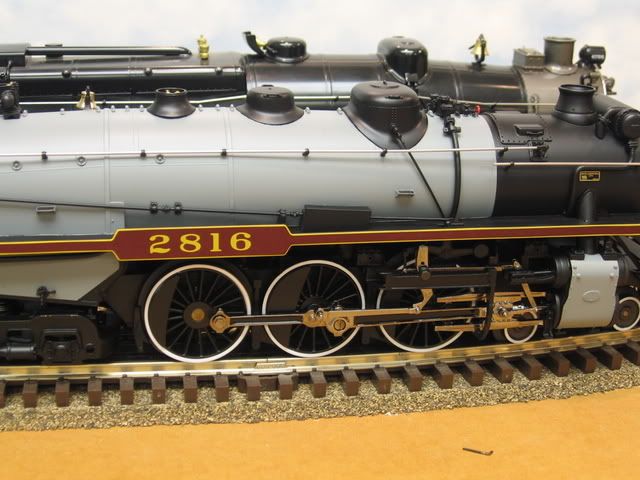

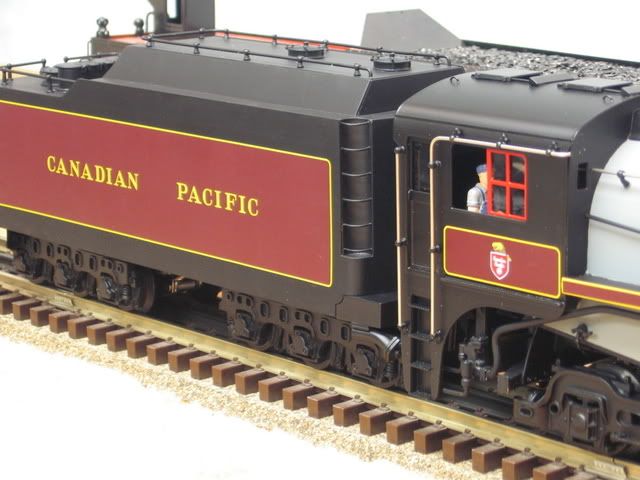
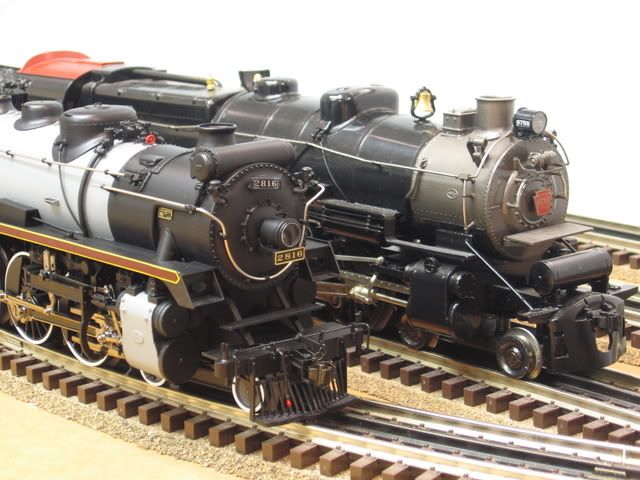

























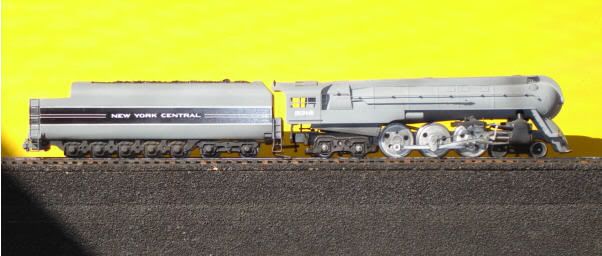



 Bruce
Bruce





